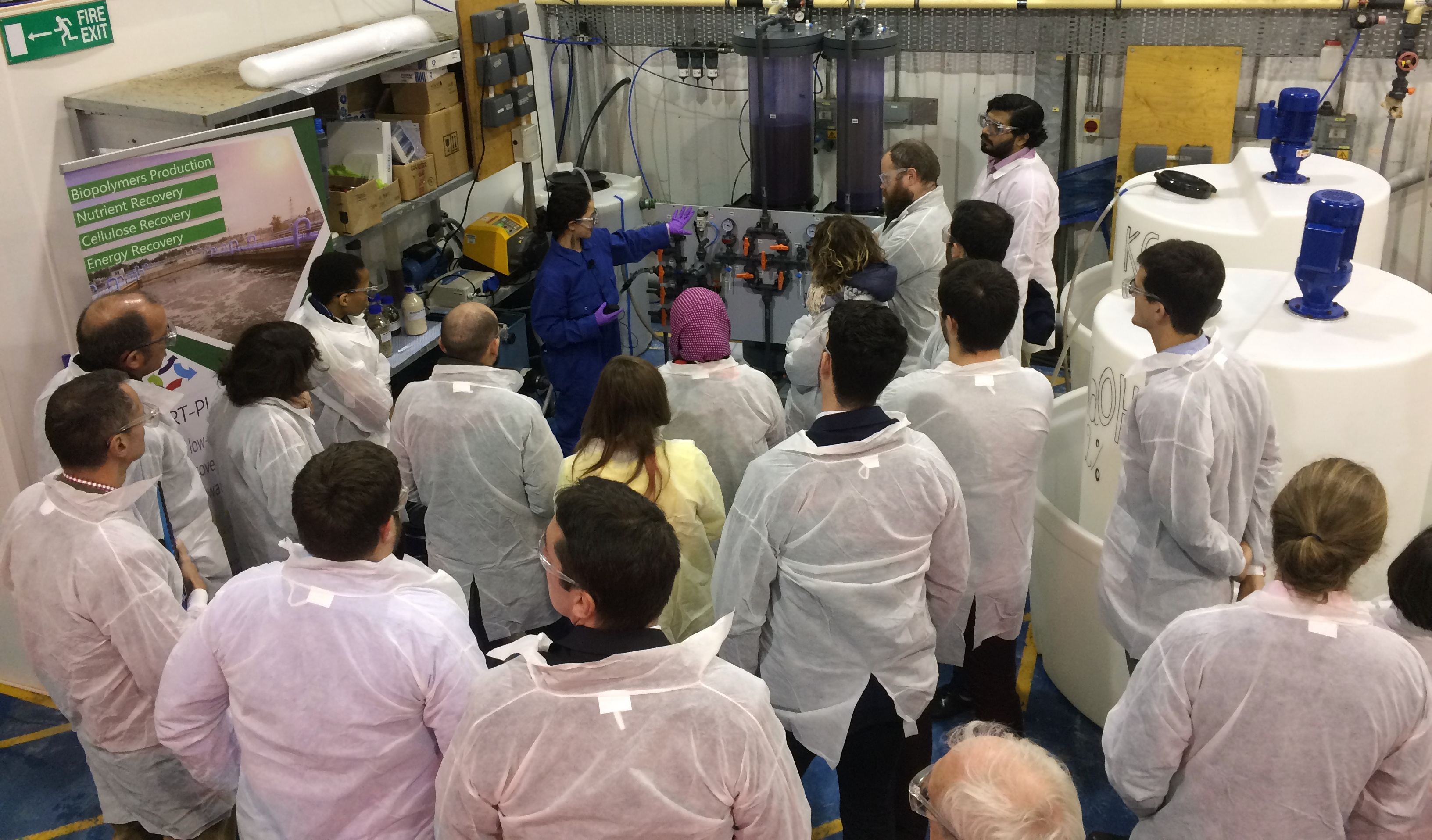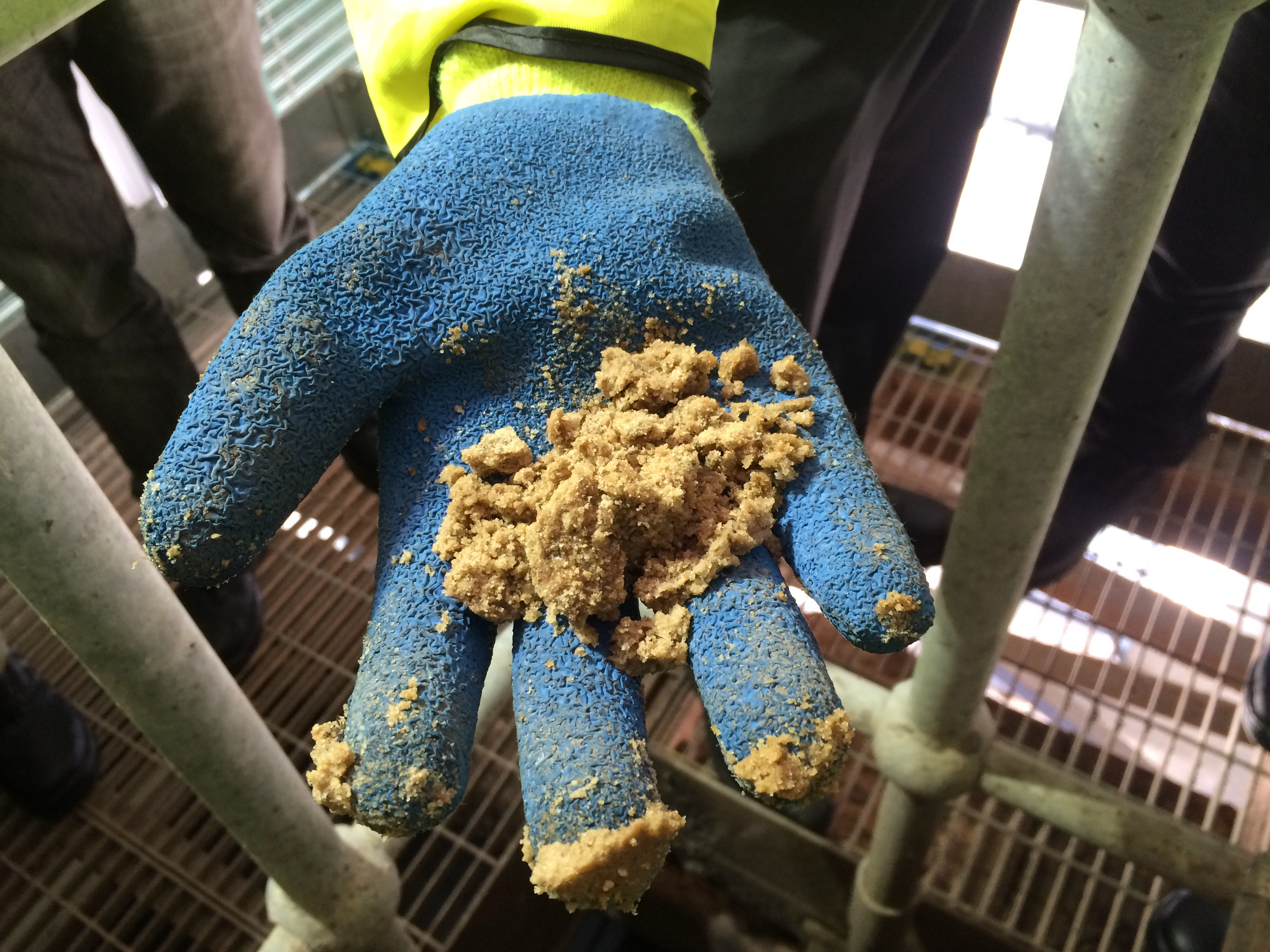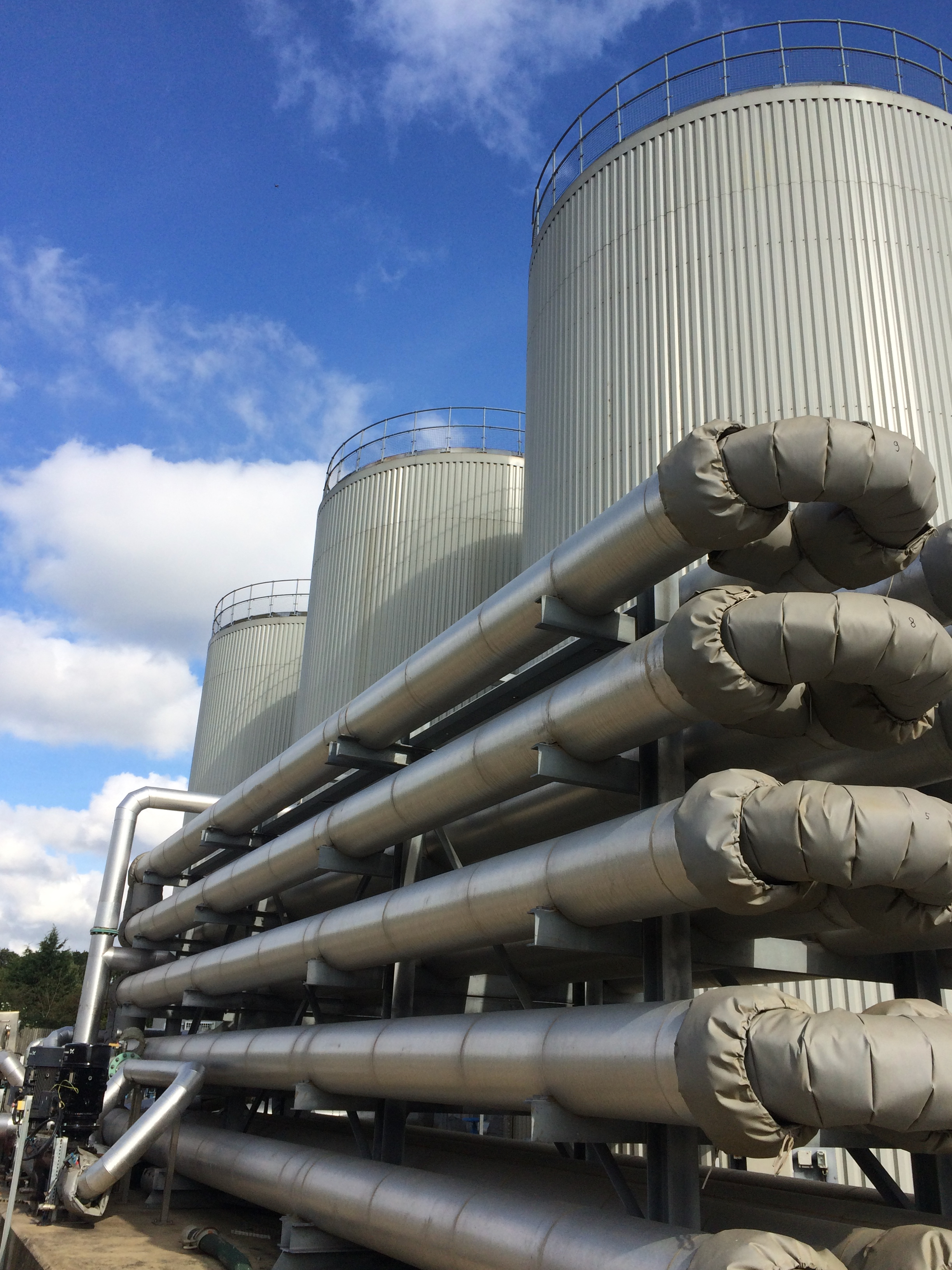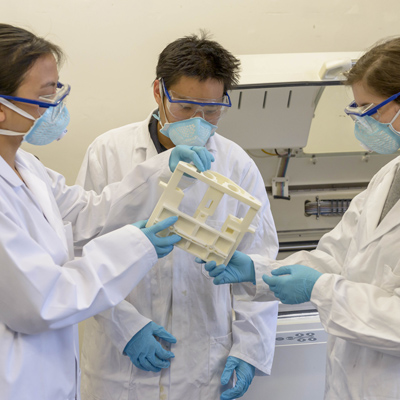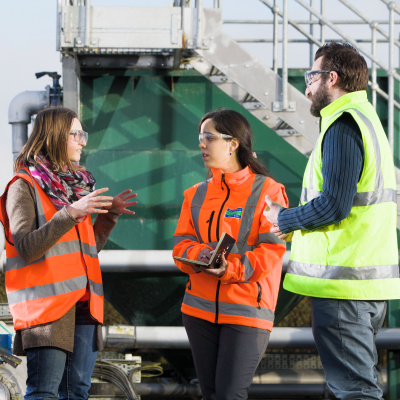Cranfield University's Resource Recovery community of practice (RR-COP) focuses on re-use and recovery in the water sector to achieve net zero targets and address climate change.
The RR-COP brings together multidisciplinary expertise to deliver training, conduct research, and implement sustainable solutions for resource recovery from water and wastewater streams. It aims to maximise the value derived from these streams while minimising waste and environmental impact. By bridging academia and industry, the RR-COP promotes the adoption of resource recovery practices at various scales, contributing to a more sustainable future in the water sector.
- Water and wastewater treatment plants generate complex streams that are full of resources. The most important is of course water, but we can also recover gas molecules for energy production (CH4, H2 and even NH3); nutrients (e.g. struvite, ammonia water, calcium phosphate); heat; chemicals and polymers (e.g. bioplastics, biofuels, volatile fatty acids, coagulants, metals), as well as soil amendment and conditioner products, and biochar.
- The recovery of resources needs to make sense from an environmental economic, social point of view and be aligned with national priorities. Functional multidisciplinary teams ensures a holistic approach and accounting for all the parameters to reach the implementation of sustainable solutions.
- Resource recovery in the water sector has been demonstrated to reduce waste, ensure environmental and ecosystems protection and help mitigate climate change.
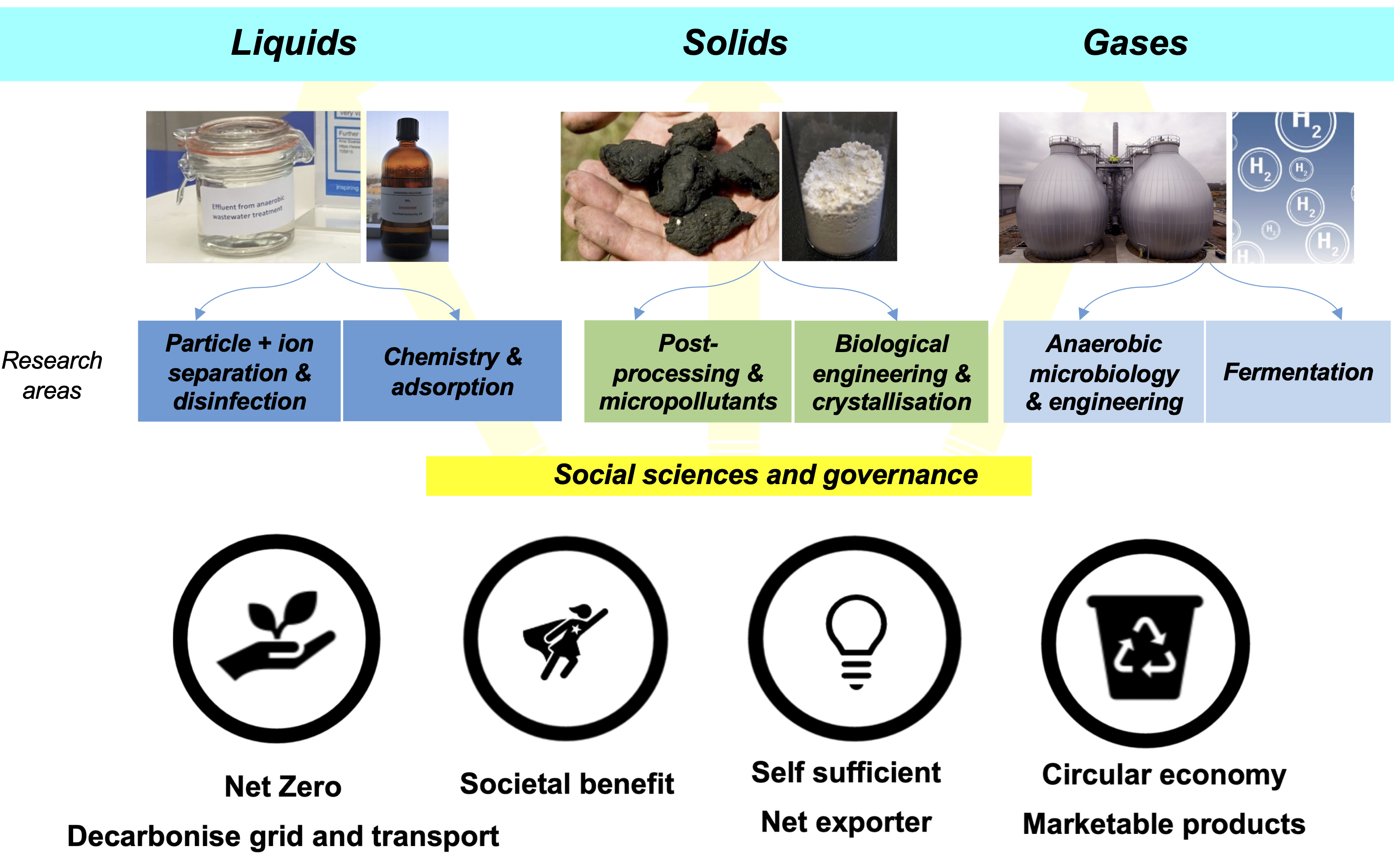
Our areas of work
The group's activities have been organised according to states of matter of the recovered products and the interconnecting sciences.
Recovery and reuse of liquid streams
Water is the most valuable and abundant resource in treatment plants. Cranfield University leads the Water Reuse Europe (WRE) Association that is a not-for-profit association which supports, assists and represents its members while promoting the water reuse sector as an effective option for sustainable and resilient water management. Example projects being delivered at Cranfield University on water reuse apply technologies such as desalination, reverse osmosis, membrane distillation, membranes, with a strong emphasis on managing water sources, water quality fit for purpose and end users. The management of the reject water is crucial to ensure sustainability of the process. The treatment of grey water and other water sources and its reuse within the household after passive (e.g. constructed wetlands and intensive treatment process (e.g. moving bed biofilm reactors, membranes reactors) is linked with exclusive research facilities such as the UKCRIC National Research Facility for Water and Wastewater Treatment and Fedden House (i.e. student accommodation with separate pipes). The recovered water can be reused in fertigation and even in direct potable reuse within the platform 'water fit for purpose', with Cranfield having experts working cross-sectionally amongst these areas and benefiting from a wide range of facilities on campus for holistic and wider studies (e.g. the plant growth facility and the soil plant facility). There is also a growing interest in the recovery of other liquid streams such as coagulants (usually iron based), bio-oils (after biosolids pyrolysis, from fats, oils and grease and algae-based products) and volatile fatty acids (after fermentation). At Cranfield, these products are recovered after the wastewater streams go through processing through fermentation, biological hydrolysis, and thermal processes. The value and end users of such products varies greatly from the water industry itself, chemical industry, to other manufacturing industries.
Recovery and reuse of gases
We have the potential to harness various gas molecules, such as CH4, H2, and even NH3, from wastewater as a valuable source for energy production. The production of hydrogen has gained significant attention at both national and international levels. At Cranfield Water, experts are exploring biological processes for hydrogen production, involving the utilisation of specific microorganisms that break down organic compounds, generating hydrogen gas as a metabolic by-product. Presently, the focus primarily lies on electrolysing treated effluents from wastewater treatment plants. Electrolysis involves the application of an electric current to split water molecules into hydrogen and oxygen. The reuse of oxygen, along with hydrogen, is being investigated for a range of applications, as oxygen holds crucial significance as a resource. However, it is important to carefully consider water management in catchments, as the electrolysis of treated effluents can affect the balance of water discharged back into nature from wastewater treatment plants, an aspect that is also encompassed in our studies.
The recovery of biogas through anaerobic digestion of biosolids has been widely implemented and established for many decades. Nevertheless, there are emerging methods to enhance methane yields and expand the benefits of this technology. Research conducted at Cranfield University has yielded improved anaerobic digestion through various types of pre-treatments, enhanced digester designs, and manipulation of microbial diversity, combined with carbon capture. Additionally, investigations into biogas upgrading to obtain biomethane are underway, allowing for the efficient recovery of heat and electricity. Aligned with net zero targets, our work focuses on exploring, optimising, and implementing anaerobic reactors for mainstream wastewater treatment in temperate climates, with special emphasis on upflow anaerobic sludge blanket (UASB) reactors and anaerobic membrane reactors (anMBR). The latter is specifically aimed at producing reusable water. Our ambition is to promote the conversion of available carbon in wastewater into energy production, rather than continuing to construct activated sludge plants that have high energy demands and result in high greenhouse gas emissions.
Furthermore, our research places significant emphasis on the recovery of ammonia gas from brines and centrate lines. Ammonia serves as both a chemical energy store and a fuel, and Cranfield's water research explores ammonia removal and recovery through various projects focusing on liquid-gas mass transfer. Technologies such as vacuum thermal stripping, membrane stripping, membrane distillation, and others utilise heat, pH, vacuum, and sweep gas as driving forces. The utilisation and application of these energy-rich gases can be explored in collaboration with colleagues from Cranfield University's energy technology laboratory.
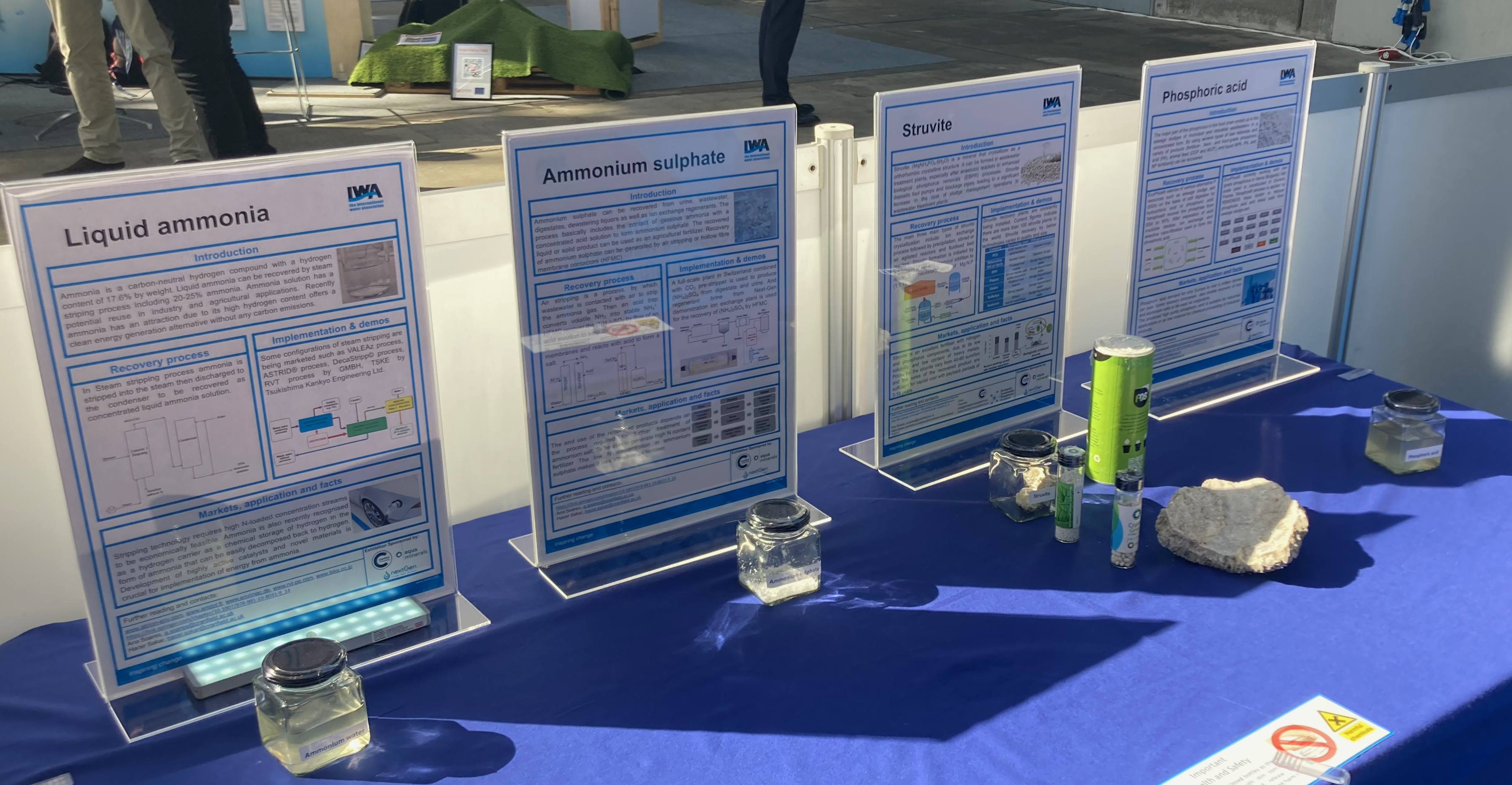
Recovery and reuse of solids
The separation of solids from water and wastewater is a routine task in treatment plants. In the UK, the value of biosolids for enriching soils through their water, organic, and nutrient content is well-established and widely practised for sludge management. However, Cranfield University is actively exploring other avenues such as the production of bio-char from thermal processing of sludge and the recovery of coagulants, opening up new research areas.
Nutrients play a vital role in supporting food production security and various manufacturing industries in the UK, including agriculture, pharmaceuticals, chemicals, automotive, and aerospace sectors. These economically strategic industries, employing approximately 5.54 million people and generating a combined annual turnover of £140.3 billion, heavily rely on nutrients. Currently, nitrogen is captured from the atmosphere as ammonia through the energy-intensive Haber-Bosch process, contributing to 0.4% of greenhouse gas emissions in the UK alone. Other essential nutrients are mined from unevenly distributed natural reserves worldwide, and their importation to the UK and Europe is often associated with social and political challenges.
Given the scarcity and geopolitical complexities surrounding nutrient reserves, several countries have imposed export limitations or bans. The lack of comprehensive knowledge about the UK's total nutrient requirements underscores our limited understanding of this critical resource flow. Cranfield Water brings together a substantial number of experts dedicated to nutrient recovery from various wastewater sources, resulting in valuable end products such as ammonia-rich solutions, ammonium sulphate, calcium phosphate, phosphoric acid, potassium-struvite, struvite, bio-struvite, among others.
Adopting a circular economy approach to nutrient management would alleviate environmental pressures by reducing mining activities, greenhouse gas emissions, pollution, and more. It would enhance the supply security of nutrients as raw materials, increase the competitiveness of key industries, stimulate innovation, foster economic growth, and create job opportunities across a wide range of strategically important sectors in the UK.
